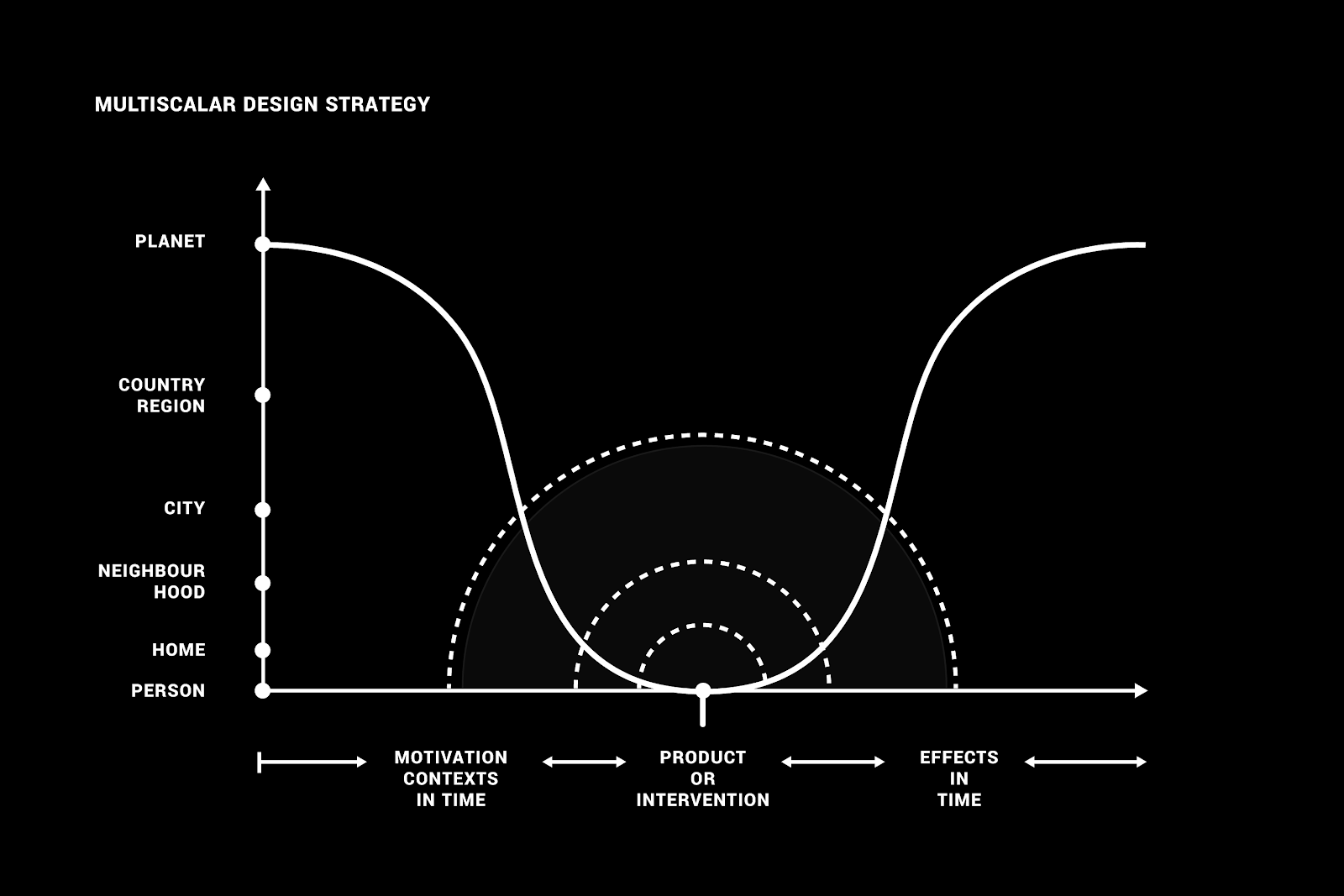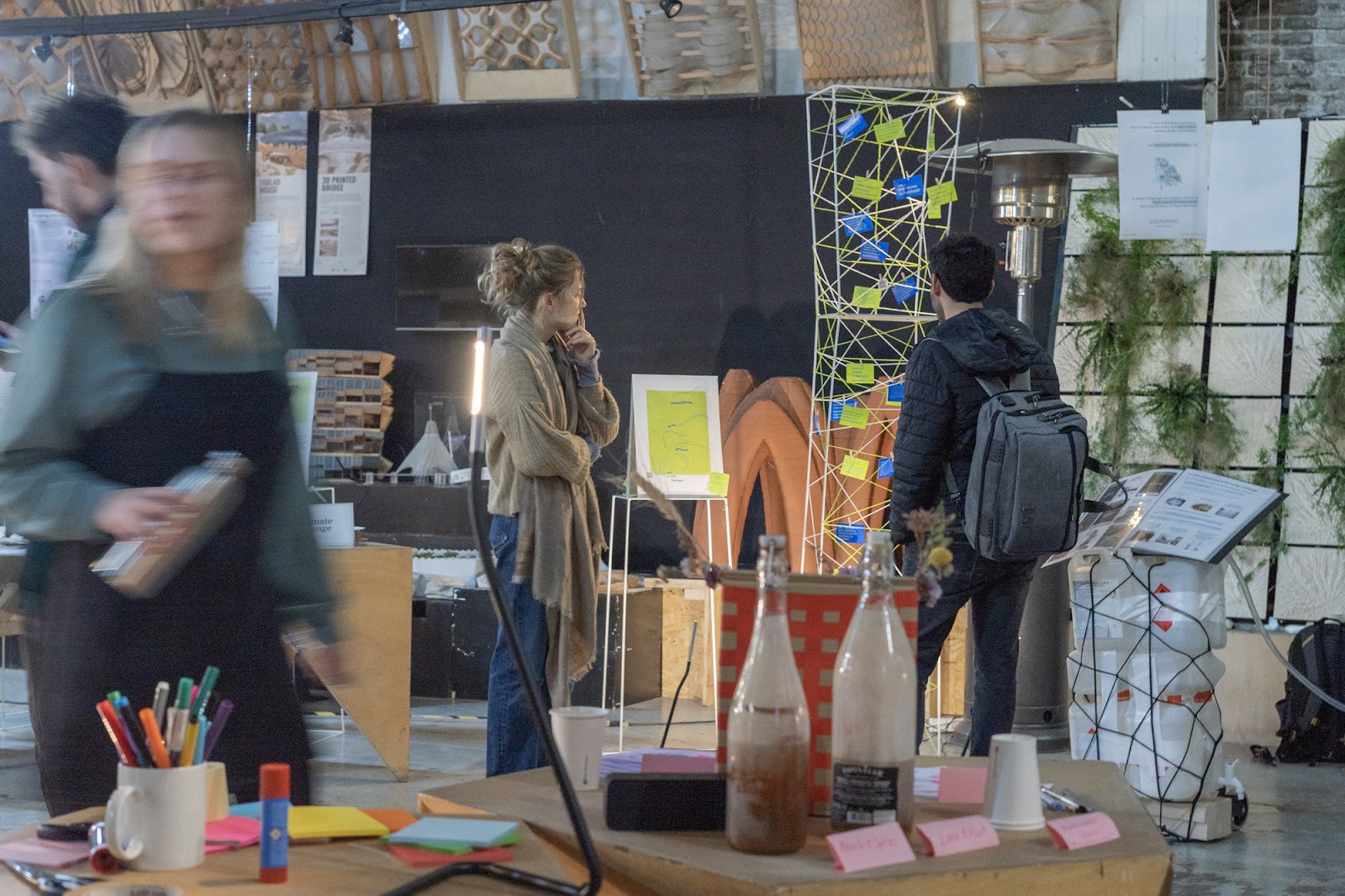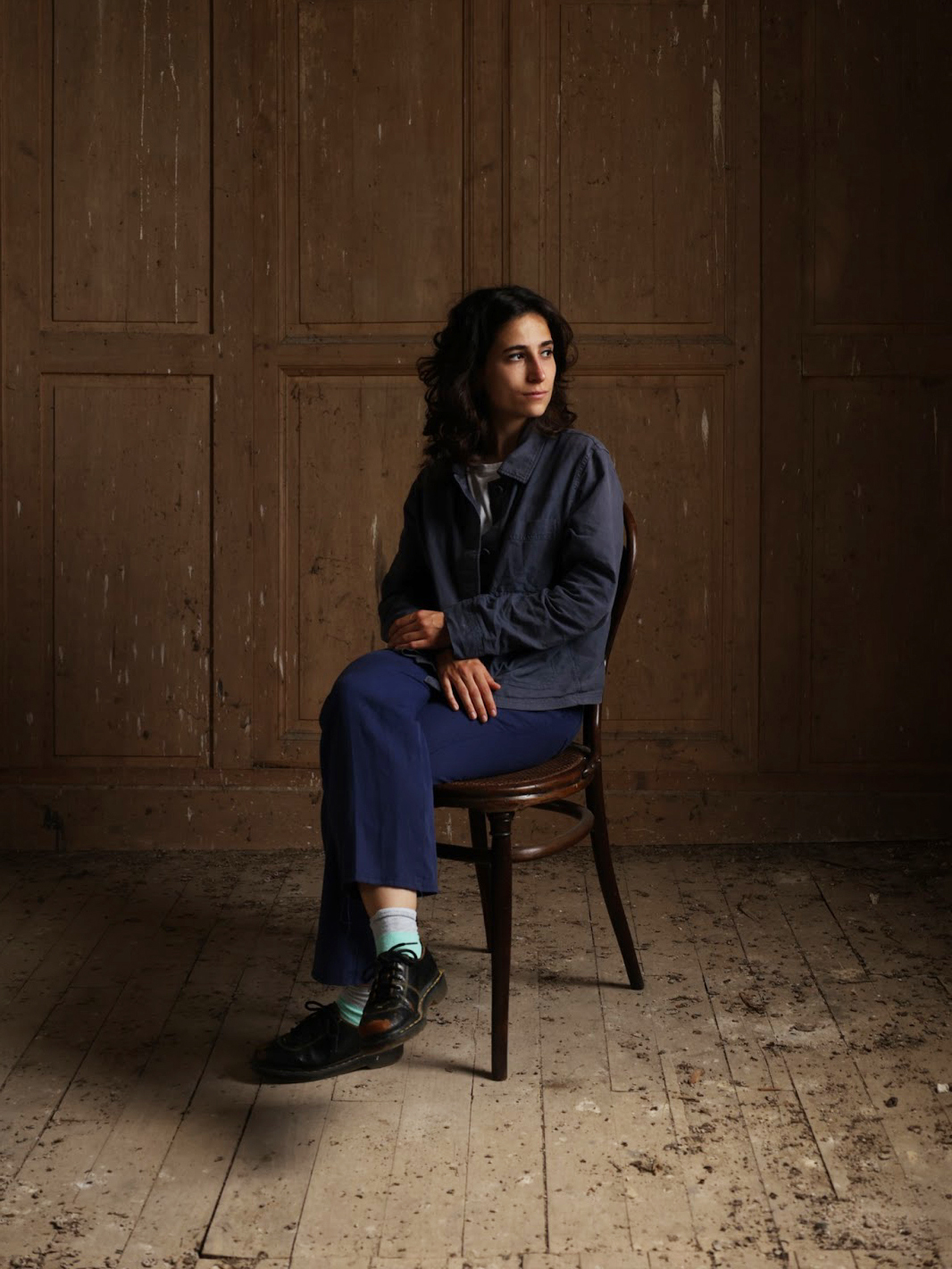Syllabus⇝
Design Studio 01 - Framing Collective Design Interventions
MDEF Research, Design and Development studios aim to take research areas of interest and initial project ideas into an advanced concretion point, and execution plan. The studio structure in three terms could be understood as follows:
TERM 1 Research: Understanding what it means to design for emergent futures. Analyzing the past and finding weak signals. References, state of the art. Identifying areas of interest. Experimenting from the first-person perspective.
TERM 2 Design: Forming the present through interventions in the real world. Building the foundations of your design space, forming strategic partnerships. Applying knowledge into practice through iterative prototyping. Testing ideas and prototypes in the real world.
TERM 3 Development: Refining interventions and identifying desirable futures. Establishing roadmaps for the construction of emergent narratives.. Communicating and disseminating your project through speculative design.

Fab Lab Barcelona (IAAC) & Fab City Foundation
The first term Design Studio aims to create a solid ground for the students to start developing their projects. Weekly activities will be set to interlink results from the courses like their mappings, cartographies, experiments, 1st person design activities, prototypes, with their personal development plan. In order to propose an area of intervention at the end of the trimester. The Design Studio activities will consist of presentations, group activities, short exercises and personal coaching.
Keywords: 1st Person Research through Design, Design Space, Documentation and Communication, Design Interventions
Learning Objectives⇝
The specific goals are the following:
- Develop a critical position in the student’s design practice.
- Define possible areas of intervention, based on the Atlas of the Week Signals.
- Generate design spaces which allows to prototype with context, direction and understanding.
- To build personal and collective repositories of resources.
Schedule⇝
Schedule: Each session will start with a 60-minute check-in and a collective reflection space to share experiences and identify collaborative goals.
Landing Kick off - Pick your purpose
Goals: Integrate personal and professional interests.
Activity 1: Pick your purpose(s). Make a poster of your interests.
Activity 2: Create your vision (pushing your purpose further) and Identity (skills, knowledge, attitude), collaboration plan.
Deliverable: Post the poster on your website.
Deliverable: Document your vision, identity, collaboration plan and reflect on your personal development.
Understanding design from a 1PP. Staying true with one's values.
Goals: In ongoing efforts to realign design processes with principles of responsibility, accountability, transparency, empathy, and positionality, it becomes crucial for designers to reexamine and reshape their methodologies and ways of approaching design projects. The emphasis is on instilling these fundamental values right from the outset of a student's path to becoming a design practitioner. Learn about 1PP iterative design interventions methodology.
Activity 1: Accept and reflect on how the new normal is shaping you as a professional. Rethinking your new hyper-local and hyper-connected workspace.
Deliverable: Bring some visuals about your areas of interests (photo, video, graphics, moodboard,...)
Deliverable: Two posts with a new workspace including what infrastructure, people, things and materials became available either physical or virtual in this new normal
Individual Design Iintervention and Roles of Prototyping in 1PP Research through Design
Goals: To learn about the different roles of prototyping in design research. Being resilient and resourceful as a professional. Learn about 1PP iterative design interventions methodology.
Activity 1: From the different roles that prototypes play in design research, reflect which ones you have used in the past and which ones you could include in your practice.
Activity 2: Bring scrap materials from home. Use the material to sketch a prototype of another colleague's inquiry.
Deliverable: Perform and document a 1pp design intervention. Reflect on how you’ve used different roles of prototyping in your intervention.
Collaborative design spaces and interventions
Goals: To explore and develop forms of aggregative documentation, building collective design spaces.
Activity: Develop a collective framework to document explorations using the existing digital platforms, build digital maps of resources and opportunities in the design studio.
Deliverable 1: A collaborative map of projects, resources, news, and opportunities for interventions that can populate your physical working space and a plan on how to share relevant information between all of you in class.
Deliverable 2: Carry out different pilot design interventions to understand in an embodied and situated way your design space.
Collaborative design intervention: a collective design action with humans and/or non-humans.
Goals: Understand what is and what is not a design intervention. Focusing on Interventions with others. Situate your collective explorations in context to frame to update your collective design space.
Activity: Plan your collective design intervention and map the actors and infrastructure you want to involve.
Task: Execute your first collective design intervention for the next Design Studio.
Deliverable: Document the collective design intervention, analyze it and reflect on the findings.
Design Dialogues Preparation
Goals: Create a collective and individual building up plan for the Design Dialogues exhibition.
Activity: Group dynamic to create themes and groups of projects for the exhibition.
Deliverable 1: Planning of the exhibition, space allocation and special needs.
Deliverable 2: Work on the Design Dialogues deliverables.
Design Dialogues
Objectives: To present collective areas of intervention and to present the first experiments at a personal and collective level, and in an immediate context. To produce the first group exhibition of the master’s projects.
Deliverables: A series of prototypes presented in a collective design space and a personal video of no more than 3 minutes (answering the question what is your updated purpose).
Deliverables⇝
Deliverables for after the holidays (Submission deadline, January 7th)
- 5 high resolution images of the highlights of your Design Studio work during the term
- 1 high resolution image of your personal and collective design space
- A pictorial (written document) (TBD)
Evaluation Strategies⇝
- Relevance of the project in relation to the Weak Signals
- Framing of the opportunity through the Collective Design Space
- Involvement of the community through the collective interventions
Grading Method⇝
| Percentage | Description |
|---|---|
| 50% | Faculty (including written assignment) |
| 50% | Self-Evaluation |
European Credit Transfer and Accumulation System (ECTS)
10 ECTS
Additional Resources⇝
Auger, J. (2010). ‘Alternative presents and speculative futures: Designing fictions through the extrapolation and evasion of product lineages’. Negotiating futures – Design Fiction. 42–57.
Candy, S., & Dunagan, J. (2017). ‘Designing an experiential scenario: The People Who Vanished.’ Futures, 86, 136–153.
Diez, T., & Tomico, O. (2020). ‘The Master in Design for emergent futures.’ IAAC. Hiltunen, E. (2010). Weak signals in organizational futures learning. Doctoral thesis. Helsinki: Aaalto University.
Krogh, P., Markussen, T., & Bang, A. (2015). ‘Ways of drifting – 5 methods of experimentation in research through design’. In Proceedings of ICoRD’15 – Research into Design Across Boundaries Volume 1. New Delhi. Springer. 39–50.
Lucero, A., Desjardins, A., Neustaedter, C., Höök, K., Hassenzahl, M., & Cecchinato, M. (2019). ‘A sample of one: First-person research methods in HCI’. In Companion Publication of the 2019 on Designing Interactive Systems Conference 2019 Companion (DIS ‘19 Companion). ACM: New York. 385–388.
Neustaedter, C., & Sengers, P. (2012). Autobiographical design: what you can learn from designing for yourself. Interactions, 19(6), 28–33.
Rosenberg, D. (2015). Transformational Design: A mindful practice for experience-driven design. PhD Thesis. Cambridge: Massachusetts Institute of Technology.
Tomico, O., Winthagen, V. O., & van Heist, M. M. G. (2012). Designing for, with or within: 1st, 2nd and 3rd person points of view on designing for systems. In Proceedings of the 7th Nordic Conference on Human-Computer Interaction: Making Sense Through Design (NordiCHI '12). Association for Computing Machinery, New York, NY, USA, 180–188.
Varela, F. J., & Shear, J. (1999). First-person Methodologies: What, Why, How? Journal of Consciousness Studies, 6(2-3), 1-14.
Wakkary, R. (2021). Things We Could Design: For more than human-centered worlds. Cambridge: The MIT Press.
Wensveen, S. A. G., & Matthews, B. (2015). Prototypes and prototyping in design research. In P. Rodgers & J. Yee (Eds.), Routledge companion to design research (pp. 262–276). London: Routledge.
More to be provided along the course
Faculty⇝
As a designer and researcher with a strong focus on sustainable practices and innovative design methodologies, Jana is committed to questioning and challenging the field of design. By continuously striving for movement and positive change, she puts sustainability, innovation, and care at the forefront of her work — which is always underpinned by post-humanist and feminist materialist thought. In her design practice, Jana’s work is community-driven and collaborative, working with other designers and artists to create thought-provoking installations and experiences.
Roger Guilemany is a founding member of the design cooperative aqui, where he contributes, through action research, to processes of ecosocial transition and the praxis of participatory design. As an independent researcher, he is interested in relationships and collaborative processes of situated production. With his design practice, he also collaborates with commoning projects and other self-governance structures.


